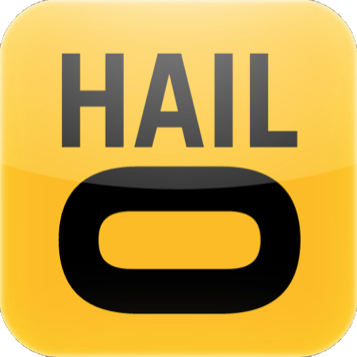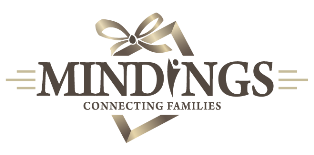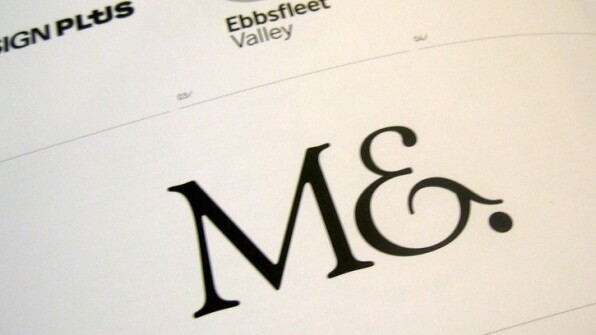
We cover a lot of new and not-so-new tech companies here on The Next Web, delving deep into the inner workings of life in a startup.
Whilst we often ask key questions relating to where they came from, what they’re doing and where they’re going, we don’t always ask this question: How did you get your name?
We’ve previously looked at how startups can find a great domain name using NameLayer, whilst we also covered Stylate, a service designed to help budding entrepreneurs arrive at a name and a logo for their new startup.
There are many weird and wonderful monikers out there, some great, some…well…not so great. Here, we speak to 9 startups we’ve covered in recent times to see how they got their name. And as you’ll see, there’s no right or wrong way.
wireWAX
We wrote about wireWAX and the intelligent video movement back in September, and we asked co-founder Dan Garraway how they came up with their name.
“Our name is often a point of question, people seem to really like it, but they don’t know why”, says Garraway. “We had two or three names before this, we hated them in more or less equal measure, but thought we’d learn to love them. One was TingTag, which we even registered at Companies House, had a logo and is still printed on our business credit card. I guess we kind of still expected to have a eureka moment on the name, but with .com’s so over-subscribed, any brief moment of elation was quickly followed by a domain search fail.”
The moment for wireWAX came when Steve Callanan, the company’s other founder, had quite enough of TingTag, and he decided that they would print every word they ever liked out on A4 pieces of paper. They then went to a nearby cafe and decided they wouldn’t leave until they had a name.
“We sat there putting A4 pieces of paper alongside each other for about an hour, checking 123-reg at every name choice”, says Garraway. “But nothing…until wire and then wax came together. It made no sense, but within minutes we were justifying it in retrospect – ‘it could be like wax, joining technologies together…it’s like the old news wires, but new…etc, etc’. We then could not believe it hadn’t been registered…it rolled off the tongue too easily. This is normally a .com fail. So, immediately we grabbed it with our domain name registrar.”
The next day, their domain company telephoned them. “This was a large, automated domain name company, it seemed strange they’d ring us”, says Garraway. “Steve answered to find they had seen the domain name wirewax.com come up on their logs, which they peruse themselves to register good names that were searched. They said it was an incredible find and wanted to find out what it was about. This seemed like a good second opinion on our name. We told them a little bit about taggable video and its future. The rest, as they say… is (recent) history.”
OneDrum
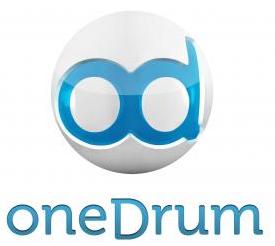 We’ve written about OneDrum on a number of occasions this year, for example when we explored the Scottish Startup scene, and also when we reviewed the P2P Microsoft Office collaboration app in November.
We’ve written about OneDrum on a number of occasions this year, for example when we explored the Scottish Startup scene, and also when we reviewed the P2P Microsoft Office collaboration app in November.
The Next Web asked founder and CEO Jasper Westaway how its name came to fruition.
“Our original name was Quolos and, technically, it still is”, says Westaway. “This was a corruption on ‘Collaborative Operating System’. It turns out most people hated the name.”
Westaway says that one of their best decisions early on was to work with a branding company to give them a complete identity. “They then went through about 200 names, but everything had been taken – often by collaboration companies – Jive, Huddle etc”, he says. “I actually wore a red shirt the first day to see if it impacted them – it did and the second tier choices all had red in it. And of course you need the .com address which complicates things further.”
“I mentioned oneDrum to the branding company”, added Westaway. “They didn’t like it. But a few days later, they came back and said it had grown on them, and within a week they all loved it.”
But why OneDrum? “It has a dual meaning”, says Westaway. “Teams move to a single beat, but also it represents a single container that all your stuff is kept in.”
Flubit
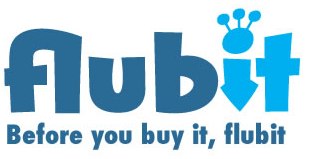 We featured Flubit back in July, it’s an online network for securing discounts on products. We spoke with founder Bertie Stephens to see how his startup derived at its name.
We featured Flubit back in July, it’s an online network for securing discounts on products. We spoke with founder Bertie Stephens to see how his startup derived at its name.
“I’m not sure if this is standard in startups or not”, says Stephens. “But the name flubit preceded the actual business idea by a couple of years or so, and it just stuck with me until I eventually had the right product for it. So rather than putting a name to a product, we put a product to the name.”
The name derived from a meeting Flubit’s Dan (who’s now their so-called ‘Head of Imagination’) had out in America, when they were working on a prior project as independent film-makers. “We were trying to seek a distribution deal for a film called ‘Roanoke'”, says Stephens.
“At the time we were very new to this area of business and had very little clue as to the right formality of distribution meetings”, adds Stephens. “Due to this, during one particular meeting we were obviously up against 2 people who knew that we knew very little and therefore decided to go acronym-heavy on us, using terms like ‘KPI’ etc. I think both Dan and I realised we had no way out so I decided to make up a name for a process we used to colour-match our scenes, making sure we had the ‘flubit’ right at all times. Similar to us pretending we knew what their acronyms meant, they didn’t blink an eyelid and began using the phrase, which amused us both greatly as we were ultimately both bullshitting each other in thinking we understood what the other was saying.”
From there, Stephens registered Flubit.com at which point he had about 4 or 5 different ideas as to what Flubit could be, which ranged from ways to make money from parked cars, to a hitchhiker’s way to get free travel around the country. “Eventually I developed the idea of Flubit and it just seemed to fit”, says Stephens. “It was short, people would remember it, and it was a verb which, in my eyes, is hugely important. This meant I could run with the tagline “before you buy it, Flubit.”
“Also, it doesn’t have a pre-conceived meaning”, added Stephens. “So we can make it mean what we like – some find it silly, others cool.”
Hailo
In early November, we reviewed a pretty neat location-based taxi-booking app called Hailo. Co-founder Jay Bregman gives us a little background on how they came up with the name.
“We met two very talented ex-Agency guys who started their own branding firm, they pitched us 10 ideas and this was one”, says Bregman. “We couldn’t afford them so they took some of their payment in equity and some in cash deferred until after the funding.
http://youtu.be/rcxZiWIXOKU
So this allowed Hailo to have a slick look and presentation before they entered their seed funding phase. “At our launch party we laughed about it, because the agency folk wore badges that said ‘investor'”, added Bregman.
Eeve
Back in September, we featured a pretty neat photo-sharing app called Eeve. Co-founder Jan Senderek explains the processes involved in deciding on their name.
“Our product concept was all about get-togethers, having fun, partying, capturing moments through photos when you are doing something with friends”, says Senderek. “And when does that usually happen? At events and evenings…these two things have that ‘eve’ in common. We immediately liked that, because it is a name by itself and gave our project a personality.”
To be distinctive from the term eve, however, they added a second ‘e’ at the beginning. And after checking domain names, they went with it. “From initial name brainstorming, to making the final decision and buying our domain name, it took us probably about 2 hours”, says Senderek. “We actually ditched another name though. For about a week, whilst still in initial idea stage, we called our project KomKlub. I think after a day, we really hated that name.”
“In general, we did not seek any help from a marketing company or anything like that”, added Senderek. “We just went with what felt right and luckily we never regretted our decision.”
Wazoku
We first covered Wazoku back in September, it’s a company that’s setting out to harness creativity and innovation with an online tool that captures and develops ideas from within an organization.
Co-founder Simon Hill explained how the name came into being. “Our name is a Swahili word that means ‘Good Idea’, so there is a nice fit”, he says. “The evolution of our name was fairly interesting. Our original name was I’d Suggest, which lasted a few months but wasn’t very well received and so we did some good old-fashioned crowdsourcing, but we came up with very little that we liked and which had an available .com domain.”
Hill noted that investors still place a lot of value on having a .com domain, so having gotten nowhere with the crowdsourcing approach, they took to the pub armed with smartphones, post-it-notes and a determination to find a name that met all their criteria.
“After the beer was flowing we got more creative, Google Translate came in to its own, and we started looking at local market options for keywords that were either not available or were too expensive for us in English”, says Hill. “Domain squatters in my mind should be illegal – its a very silly market and I think is stifling innovation and entrepreneurship. The Swahili link was nice, because my girlfriend was heading out to Tanzania for her job, and so we stuck with that. We found ‘idea’ was Wazo, but that sounded odd as a company name – it sounds a bit abusive! Then a friend’s girlfriend came up with the derivative of adding the word ‘great’, we checked, the name was born and Wazoku was founded. It was a fun night and we got there in the end!”
Blottr
We’ve covered Blottr, the people-powered news service, quite a few times over the past year. The last time we spoke with them, they were launching their platform internationally back in October. We caught up with founder Adam Baker to ask how its name came to be.
“I registered the name Blottr about 4 years ago whilst working on another idea”, says Baker. “Broadly, the idea centered on aggregating people’s Web activity in one place, creating a personal ‘Blott’. I brainstormed quite a few names, most of which were already registered and ended up with Blottr.”
“I impatiently purchased the .co.uk domain, and a number of other domains, before even looking to see if the .com was available”, added Baker. “And it wasn’t. So I spent about 8 weeks negotiating with the owner, who was in the US. Eventually, I got it and paid way more than the market value! Shortly after, I decided the original idea wasn’t sustainable.”
So, when Baker arrived with the business idea that we see with Blottr today, he decided to use the domains he already had. “I’d already spent a small fortune acquiring the .com”, he explains. “And, actually, a ‘Blott’ still resonates well for this business. Each post a contributor writes is a ‘Blott’.”
Mindings
Mindings is a Web app and back-end service that’s setting out to connect families and transform telecare. We interviewed founder Stuart Arnott just last week, and we caught up with him again to ask how he got his company name.
“Mindings started out being called ‘The Magic Granny Frame'”, says Arnott, with complete sincerity. “In fact, I still use the initials ‘MGF’ as part of my documentation system. I’m not sure how that came about, maybe something to do with Apple saying that the iPad was ‘magical’, and everyone loves their Granny. Some people liked it, some people didn’t, some people said ‘well, it’s a working title’, which I knew meant they didn’t like it but didn’t have the heart to tell me!”
So he called on his friend Shannon, who is a marketeer, who offered to help him find a name. “We were at the point of starting to build a website, and we needed something we could trademark to start getting the intellectual property (IP) rolling”, says Arnott. “She said it needed to be one word, and I thought ‘great, we’re going to come up with one of these horrible names that has Qs and Ys and Xs in it’. And I hate these names – I thought it would end up being Qnect or Frayme or Pixxma or something dreadful like that. However, Shannon said ‘no, it should come from your heart’, and I thought ‘oh great, some hippy, dippy nonsense now…’.”
“Mindings was inspired by my daughter being born at the time my Mum, who lived 500 miles away in Scotland, was diagnosed with terminal cancer”, says Arnott. “I wanted to send her daily pictures of my new-born daughter to keep her spirits up. So, Shannon started sending me links to YouTube videos of sad songs about family and loss. She sent me the link to Josh Groban singing ‘You Raise Me Up‘, which was my Mum’s favourite song and was played at her funeral. I started crying. ‘Why are you doing this to me?’ I said to her, through tear-filled eyes.”
And this is where the name came from, seemingly out of nowhere. “‘Now – tell me what is it called’ she said to me. ‘Mindings’, I blurted out. It came from nowhere”, says Arnott. “It’s an old Scottish word my Granny used to use when we visited her and she’d have a wee present for me – it means a gift of little or no value, given just to let the person know you’re thinking about them. It was perfect. And meaningful. And, as Mindings developed into something that could receive text messages, run a personal calendar, display Facebook content, and evolve into something akin to a TeleCare product, the name became even more relevant. Mindings means caring.”
Said.fm /SuperOwl
/SuperOwl
We first featured Said.fm back in February 2011, and it was an online discovery platform for spoken-word podcasts. We caught up with founders Abdel Saleh and Aisha Yusaf in our August feature which explored the Scottish startup scene, only to discover the company had pivoted, moved to London and become SuperOwl.
“Our main criteria for Said.fm was that we wanted something that was fairly literal – the name would indicate what the product is”, says Yusaf. “We loved the idea of how simple it is to switch on or tune into an FM radio channel. The ethos for Said.fm was to make online audio content as easy to consume as traditional radio, so we wanted to give a nostalgic nod to this by including ‘FM’ in our name.”
“The word ‘Said’ was favoured as we wanted to disambiguate ourselves from music services since we were all about the spoken word”, added Yusaf. “Obviously, these days, finding a name with an available Web domain is critical, so due to this a lot of ideas were ruled out.”
It transpires that the name ‘Said.fm’ was a midnight epiphany during a long-haul business trip. “It was one of those ‘aha‘ moments, both my co-founder and I instantly liked it. We bought the domain almost immediately”, says Yusaf.
“Despite coming up with a simple and easy to pronounce name, a lot of people didn’t pronounce it correctly”, says Yusaf. “They kept confusing the word ‘Said’ with the popular Arabic name Saïd (like the Saïd Business School). In addition to this, many people thought we were a music service due to the use of ‘FM’.”
So, with a little hindsight, Yusaf says that they wished that they’d user-tested the name. Which brings us nicely to SuperOwl, which is launching soon.
“Now that we know that even literal names can end up being misunderstood, when we pivoted our product we decided to be not so literal or epiphany-driven”, says Yusaf. “We actually started to think more critically about company names around us, and we liked names that were playful, fun and not necessarily indicating what the product is.”
“Names that evoked a feeling particularly stood out”, says Yusaf. “‘Innocent’ (smoothies), ‘Hipmunk’ (flight search startup) and ‘Look Mum No Hands’ (their local cafe) are good examples. As the product is about listening to interesting stories, owls immediately came to mind as they have one of the best hearing ranges in the animal kingdom. Plus, their image is synonymous with wisdom and knowledge-seeking.”
But SuperOwl wasn’t an instant choice. “Our first attempt was the name ‘Smug Owl'”, explains Yusaf. “We put that name, plus multiple versions of the tag-line, out in the wild – on Hacker News, to our friends, family and colleagues and to entrepreneur user-groups in London. The most well received tag-line currently features on our splash page.”

“Super Owl has been a brilliant name to play with”, adds Yusaf. “We had a Halloween version of the Owl and he’s already getting his outfit ready for Christmas. Our first t-shirt has been a hit, which is now available in our SuperOwl shop.”
Choosing YOUR name
It’s clear from speaking to these startups that there’s no right or wrong way to go about choosing your company name. But it is an important part of a brand’s identity, thus the name should encapsulate what you are, what you do and what you can offer.
Whether you pay for a professional branding agency, or sit around in a pub brainstorming with friends, it’s entirely up to you how you derive your name. The end, it seems, justifies the means.
Get the TNW newsletter
Get the most important tech news in your inbox each week.

